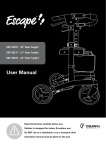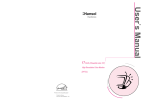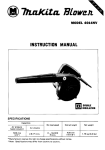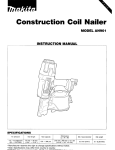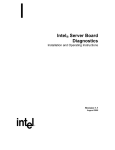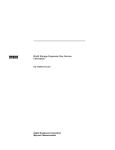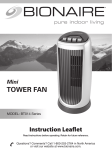Download Title pages - minus zero degrees
Transcript
---- -- ----- ------_. ----- Hardware Maintenance Reference Revised Edition (March 1986) The following paragraph does not apply to the United Kingdom or any country where such provisions are inconsistent with local law: INTERNATIONAL BUSINESS MACHINES CORPORATION PROVIDES THIS PUBLICATION "AS IS" WITHOUT WARRANTY OF ANY KIND, EITHER EXPRESS OR IMPLIED, INCLUDING, BUT NOT LIMITED TO, THE IMPLIED WARRANTIES OF MERCHANTABILITY OR FITNESS FOR A PARTICULAR PURPOSE. Some states do not allow disclaimer of express or implied warranties in certain transactions, therefore, this statement may not apply to you. This publication could include technical inaccuracies or typographical errors. Changes are periodically made to the information herein; these changes will be incorporated in new editions of the publication. IBM may make improvements and/or changes in the product(s) and/or the program(s) described in this publication at any time. It is possible that this publication may contain reference to, or information about, IBM products (machines and programs), programming, or services that are not announced in your country. Such references or information must not be construed to mean that IBM intends to announce such IBM products, programming, or services in your country. Products are not stocked at the address below. Requests for copies of this publication and for technical information about IBM Personal Computer products should be made to your authorized IBM Personal Computer dealer, IBM Product Center, or your IBM Marketing Representative. The following paragraph applies only to the United States and Puerto Rico: A Reader's Comment Form is provided at the back of this publication. If the form has been removed, address comments to: IBM Corporation, Personal Computer, P.O. Box 1328-C, Boca Raton, Florida 33429-1328. IBM may use or distribute any of the information you supply in any way it believes appropriate without incurring any obligations whatever. © Copyright International Business Machines Corporation 1981, 1986 Federal Communications Commission Radio Frequency Interference Statement Warning: The equipment described herein has been certified to comply with the limits for a Class B computing device, pursuant to Subpart J of Part 15 of the FCC rules. Only peripherals (computer input/output devices, terminals, printers, etc.) certified to comply with the Class B limits may be attached to this computer. Operation with non-certified peripherals is likely to result in interference to radio and TV reception. If peripherals not offered by IBM are used with the equipment, it is suggested to use shielded grounded cables with in-line filters if necessary. CAUTION The products described herein are equipped with a grounded plug for the user's safety. It is to be used in conjunction with a properly grounded receptacle to avoid electrical shock. ~ Safety Inspection Guide The intent of this inspection guide is to assist you in identifying potentially unsafe conditions on these products. Each machine, as it was designed and built, had required safety items installed to protect users and service personnel from injury. This guide addresses only those items. However, good judgment should be used to identify potential safety hazards not covered by this inspection guide. If any unsafe conditions are present, a determination must be made on how serious the apparent hazard could be and whether you can continue without first correcting the problem. Consider these conditions and the safety hazards they present: • Electrical hazards, especially primary power: primary voltage on the frame can cause serious or fatal electrical shock. • Explosive hazards, a damaged CRT face or bulging capacitor can cause serious injury. iii • Mechanical hazards, loose or missing hardware can cause serious injury. The guide consists of a series of steps presented in a checklist. Begin the checks with the power off and the power cord removed from the power receptacle. We recommend all non-IBM devices and attachments be removed from the unit before you conduct the safety inspection. Reference Literature: • Guide to Operations manual • Any applicable safety publications. Checklist: 1. Check exterior covers for damage (loose, broken, or sharp edges). 2. Power off the system. Disconnect the power cord from the electrical outlet. 3. Check the power cord for: a. A third-wire ground connector in good condition. Use a meter to measure third-wire ground continuity for 0.1 ohm or less between the external ground pin and frame ground. b. The cord set should be the appropriate molded type as specified in the parts catalog in the Hardware Maintenance Service manual. c. Insulation must not be frayed or worn. 4. Remove the back panel from the system unit (if applicable). 5. Remove the cover mounting screws, and remove the cover. 6. Check for any obvious non-IBM alterations. Use good judgement as to the safety of any non-IBM alterations. 7. Check inside the unit for any obvious unsafe conditions, such as metal filings, contamination, water or other liquids, or signs of fire or smoke damage. iv ~ 8. Check for worn, frayed, or pinched cables. Ensure the voltage specified on the voltage tag, or switch position (back panel of the machine) matches the voltage of the power receptacle. If in doubt, verify the voltage. 9. Examine the power supply and verify the following: a. Non-removable fasteners in the power-supply cover have not been removed or tampered with. b. The grommet is installed where the internal power cables come through the frame of the power supply. 10. Check for the following labels on all systems: • "Caution: Hazardous Area. Do Not Remove This Cover. Trained Service People Only. No Serviceable Components Inside. " or ".-.....,. • 1& DANGER Hazardous voltage inside. Do not open. 11. In systems using a battery, check for the following labels: • "BATTERY WARNING: Do not dispose of battery unit in fire or water. See instruction for disposal in the battery installation instructions. " or I& BATTERY CAUTION I • Replace only with PIN 8286121. Use of a different battery could result in ignition or explosion of battery. Order replacement from IBM authorized dealer. 12. Visually check the condition of the battery (if applicable) and ensure the battery has a safety hazard label attached. 13. Machines manufactured May 1986 or later, weighing in excess of 18 Kg. (41.8Ibs), must be labeled with the weight of the system unit. v Handling Static-Sensitive Devices Some of the components that make up the options for the system can be damaged by electrostatic discharges. To prevent this damage, the options are wrapped in a conductive, anti-static bag; certain precautions must be taken before removing an option from its bag: ,,-....., Hold the option (still wrapped in its anti-static bag) in one hand and touch a metal part of the system unit with the other hand. This will place your body, the option, and the system unit at the same ground potential, thus preventing an accidental static discharge. c'',-----..,,~'' Carefully remove the option from its anti-static bag. Be sure to grasp circuit boards by the edges only; do not touch the component pins or solder joints. Grasp diskette drives by their frames to avoid touching the electronics board. Grasp chips by their narrow ends only, not by their pins. When inserting an option adapter into the system board, hold the adapter by its top edge or upper corners. vi ".......", How to Use this Maintenance Library ~\ This Hardware Maintenance library consists of three major diagnostic tools: a two-part set of diagnostic manuals and an Advanced Diagnostics diskette. The Hardware Maintenance Reference manual describes diagnostic procedures and their use, field replaceable unit (FRU) removal procedures, and provides general information about the systems. Once the reader has become familiar with its content, the Hardware Maintenance Reference manual is no longer required on each service call. It can be kept in a convenient place and used for reference, as needed. The Hardware Maintenance Service manual contains all necessary information to diagnose a failing system. Maintenance Analysis Procedures (MAPs), jumper positions, switch settings, and the parts catalog are in this manual. ~ Additional options may require supplements to the manuals. The Hardware Maintenance Reference manual provides an area in the back of the manual to file these supplements. Each section of the Hardware Maintenance Service manual (with the exception of the MAPs) has a designated area for supplements. The MAPs are sequenced by number and should be updated accordingly. The Advanced Diagnostics diskette is designed to be used with the MAPs to: • Test each area of the system • Isolate problems to specific areas of the system through the use of error codes • Verify correct installation and operation of the system. Other functions of the Advanced Diagnostics diskette are described in this manual. vii Notes: viii Preface This manual is used to support the Hardware Maintenance Service manual and Advanced Diagnostics diskette. Readers should have received training on the IBM Personal Computer family. This manual is divided into major parts that are separated by full-length die cut tabs. Within each part are 3 sections: SECTION 1, "GENERAL INFORMATION," provides product description, theory of operation, and environmental specifications. ~. SECTION 2, "INTRODUCTION TO DIAGNOSTICS," has the diagnostic menu reference and explains the diagnostic aids. Also included are sample diagnostic screens that may be encountered during diagnostic testing. SECTION 3, "REPAIR INFORMATION," shows the locations of the various components and the information needed to remove, replace, and adjust any of the field replaceable units (FRUs). "SUPPLEMENTS," is provided as a convenient place to add any new information to this manual for IBM Personal Computer options. This manual supports the IBM Personal Computer family. The procedures, within each section, work for all machine types except where differences are noted. Operating instructions are in the appropriate Guide to Operations manual. Detailed hardware and interface information is in the Technical Reference library. ix Notes: x











